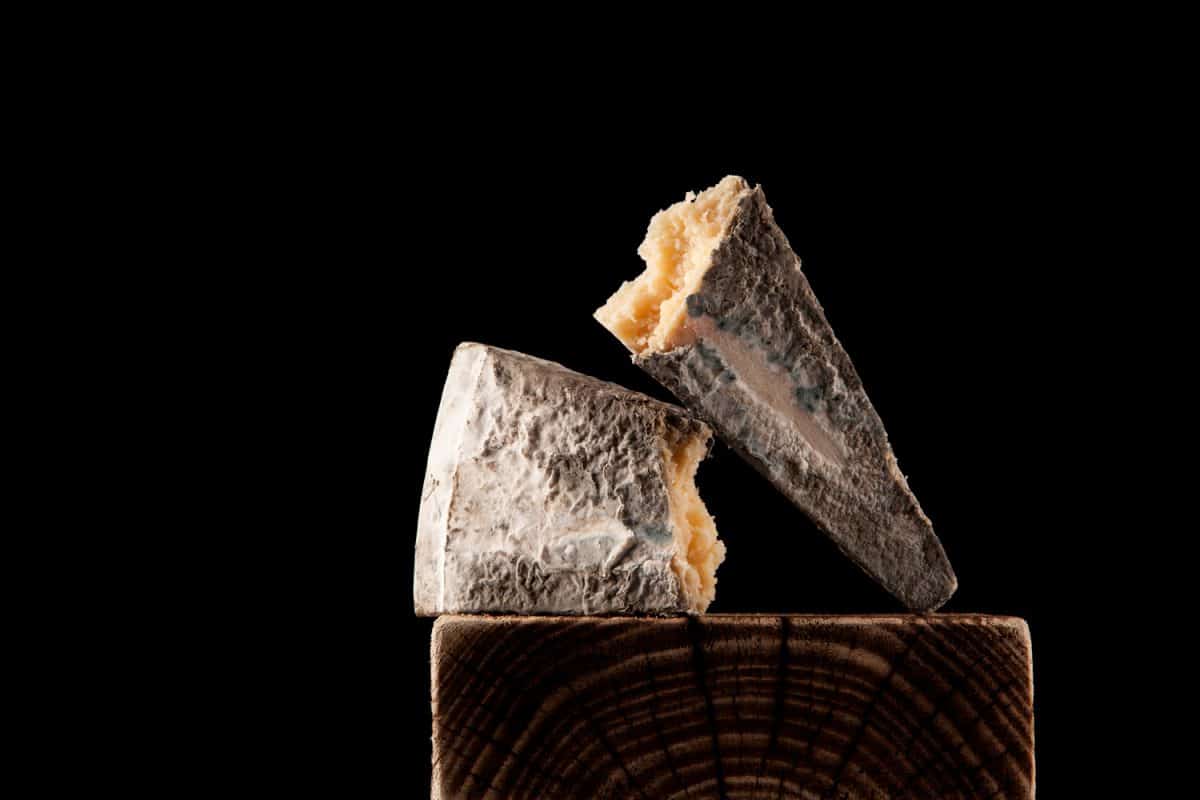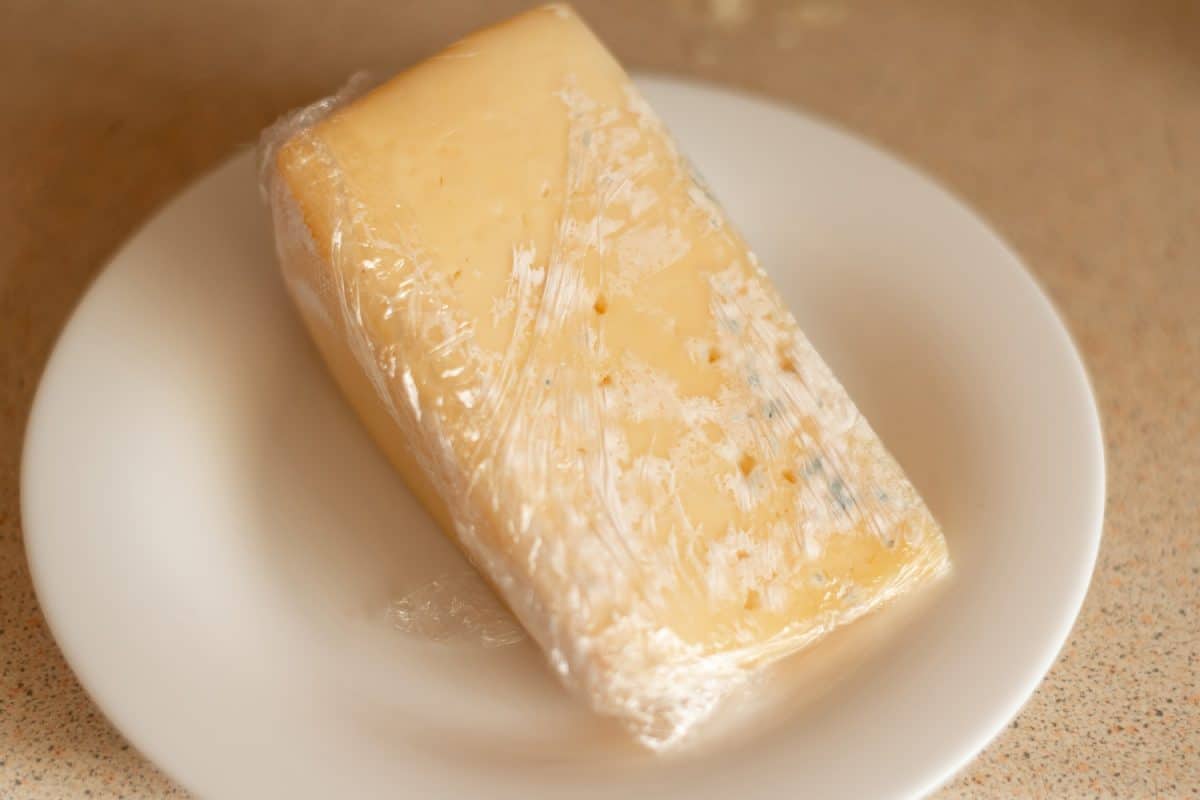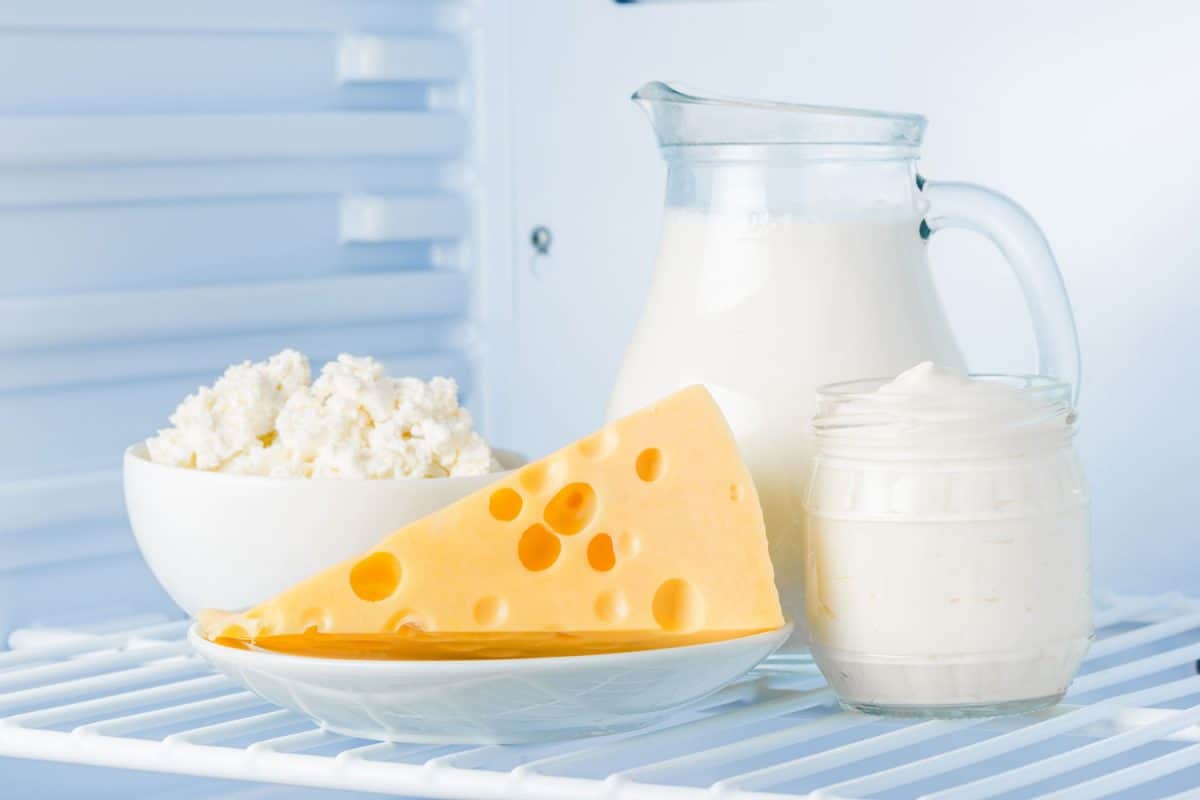Deep down, we all wish to stock up on innumerable cheese blocks, never to have to wait for groceries again. Alas, that remains to be a fantasy. But what we can do is efficiently utilize the cheese we buy by properly storing it. Let us evaluate how long we can benefit from mouth-watering, cheesy foods by refrigerating the cheese in the first place.
Depending upon its hardness, cheese may last in a fridge for a few weeks up to several months. For unopened packages, the best guide is the best-before date allotted by the manufacturer.
- Soft cheeses, once opened, can be kept in a fridge for a maximum of one week. Due to advanced processing methods, cream cheese is an exception here, with a lifespan of up to two weeks.
- Hard cheeses include cheddar, parmesan, and swiss. They may be refrigerated for at least six months before opening. Once opened, they last about 3-4 weeks in the fridge and six months if frozen.
Further on, we discuss the life expectancy of cheese, signs of spoilage, and what we can do to deal with them. Keep reading to learn the correct way to care for cheese.

Rules on Refrigeration
Essentially, the hardness of a cheese determines whether or not it can last outside a refrigerator for long. As per USDA’s recommendation, all kinds of soft cheese must be refrigerated to eliminate the growth of disease-causing bacteria.
Such bacteria harbor at a temperature range of 40 degrees Fahrenheit to 140 degrees Fahrenheit. It is known as the danger zone. It is advised to dispose of cheese left in the danger zone for more than two hours.
On the contrary, refrigeration may be skipped for hard cheeses, as was the practice before technological advancement. However, cooler temperatures will prolong the shelf life of the cheese to months after its expiration date.
How Can You Tell if Cheese Is Spoiled?
Cheese spoilage comes with a bunch of forewarnings. The key lies in being vigilant and properly inspecting all aspects, be it taste, smell or appearance.
However, the foremost step is to check the best-before date associated with it. If it is way past the date and portrays signs of damage, get rid of it immediately.
If the date is somewhat near, let the examination determine the results. Remember that if not properly stored, cheese may expire months before its expiry too.
Appearance

Changes in the outlook of your cheese are the most straightforward way of diagnosing a possible expiration. Begin by considering the color. Look for signs of discoloration or dark patches on the surface.
For example, fresh cream cheese always comes in an even, white color. If you notice the white fading into yellow or developing green streaks, it is a red flag.
At this stage, you would also like to look for mold formation on the surface. If the mold has not deeply penetrated, the cheese is reusable after cutting a portion out of it. We further discuss this later in the article.
Texture
The texture or consistency of the cheese can also be a giveaway for its condition.
Soft cheese, like cottage cheese, will disintegrate and turn watery in their packaging. This is because the fats leach out due to the surrounding environment.
For instance, cream cheese becomes too crumbly in the presence of harmful bacteria.
For hard cheeses, you may notice sections of the cheese either drying off or turning extra slimy. Cracks on the surface of the cheese are also an indication of its expiry.
Cheddar cheese, for instance, solidifies in the structure. You will begin to see it break apart into pieces.
Smell

Lucky for consumers, all dairy products immediately emit an unpleasant odor upon spoilage. Yet, the smell becomes a tricky component to inspect. Most cheeses come with a distinct smell of their own.
This makes it difficult to differentiate if the smell. Is the cheese beginning to spoil? Is it a cheese known for how smelly it can be?
Thus, it is crucial to be familiar with the way your cheese smells when you open the packaging. Then, you will be able to compare changes in the scent to the smell of fresh cheese and identify signs of decomposition.
Remember that no matter how intense a cheese may smell, it is only rancid when it rots.
Taste
If all else fails, let your tastebuds determine whether the cheese tastes fresh as new. Remember that when cheeses decompose to dangerous levels, you will be able to notice before considering using your taste buds.
Thus, nibbling a small piece of it in the initial stages of damage would not pose any health hazards.
Cut off a piece only large enough to identify the flavor. Make sure it does not have any mold on it. If it tastes unpleasant, something like sour milk, or leaves a bad aftertaste, it is time to discard the cheese.
Why Does Cheese Mold in the Refrigerator?
Mold is simply a microscopic fungus that extends as a threadlike structure, gradually contaminating the surface area of the cheese.
Warm, humid conditions foster mold growth. Yet, refrigerating cheese often causes rapid mold formation. How contradictory!
Funnily, it is not the machine to blame but our lifestyle habits that cause this. If you reuse utensils or packages, it most likely makes contact with outside bacteria or commonly creates the sites for allergens.
Moreover, various fungi may even pass on to the cheese from your bare hands.
Is It OK To Cut the Mold off Cheese?
It is acceptable to cut the mold off cheese, but it is not very simple. Some cheeses do not let mold spread quickly. Others are more susceptible to be contaminated fast. So, the type of cheese matters.
If you have a hard cheese at hand, cut ¼ inch more than just the part that contains the mold. Then, look for any signs in the leftover portion.
If it is clean and the cheese overall does not portray signs of spoilage, you may go on with consuming it.
Soft cheeses lack a solid structure. Therefore, mold usually spreads all across the surface. In such cases, cutting off a portion would be futile as it would have its roots in the internal parts.
Some Molds Are Edible
Signs of mold formation on cheese are a red flag, but that doesn’t mean all kinds of molds do so. In fact, some are even safe for consumption.
Brace yourself for a revelation! If you are a fan of processed cheese, molds, namely Penicillium roqueforti and Penicillium glaucum, are used as boosters of flavor and appearance in various processing methods, like the production of blue cheese.
How Do You Make Cheese Last Longer?

In the end, one cannot extend the shelf life of cheese to eternity, but one can take measures to maximize it.
- Be mindful of the refrigeration techniques and practices for the different kinds of cheeses.
- Avoid eating out of jars or reusing utensils to prevent cross-contamination.
- Use airtight containers and avoid keeping the package open to prevent airborne contamination of food.
- If you separate the cheese from its packaging, dab it with some olive oil before putting it in the container. This method will help create a barrier between any mold and the cheese.
- Don’t separate soft cheeses from their solution. If doing so is necessary, replace it with some saltwater brine to sustain the preserving layer.
Tips on Storage
Yes, it is given that most cheeses originally come wrapped in a thin layer of plastic sheet. Still, if you’re looking for the cheese to be fresh and ripe throughout its shelf life, plastic is the worst choice of packaging.
Try getting your hands on a specialized cheese paper designed to let cheese breathe and maintain humidity.
However, if you’d like to skip the investment, you can opt for a simple parchment or beeswax paper. Make neat folds during the wrapping that are not too tight but also not excessively easy-fitting.
- Store in the vegetable crisper of the refrigerator to maintain a consistent temperature during storage. The ideal range for storage is about 34℉-38℉.
- Avoid reuse of packaging material if it gets in contact with external influences.
- Do not freeze semi-soft or soft cheeses as it would interfere with their ideal temperature ranges. You can freeze all kinds of hard cheese to extend life expectancy. Freezing hard cheeses does not affect the quality of cheese and may only cause slight deviations in texture and appearance.
Final Takeaway

If there is one thing we wish you take with you, it is the knowledge that cheese is worthy of care. Simply tossing it in a refrigerator is insufficient.
You must become familiar with its shelf life, signs of spoilage, materials to avoid, and how to store it correctly. We hope you found the information above insightful.
Before you go, are there any other cheese concerns you may have? Are you trying to decide between purchasing or making your own grated cheese? We can offer some help in your decision-making.
For more information, check out our post here.
Do you own a cheese knife? Are you curious to know what the hook is for? You can find out more by checking out our article here.
Until next time!

![Aging old cheese in the factory, Does Cheese Always Age Well Or Does It Go Bad Eventually? [According To Type Of Cheese]](https://kitchenseer.com/wp-content/uploads/2021/09/Aging-old-cheese-in-the-factory-250x250.jpg)

![set of cheese knives on a round wooden board. 14 Types Of Cheese Knives [Inc. What Cheese They're Good For And Why]](https://kitchenseer.com/wp-content/uploads/2021/07/set-of-cheese-knives-on-a-round-wooden-board.-14-Types-Of-Cheese-Knives-Inc.-What-Cheese-Theyre-Good-For-And-Why-250x250.png)


